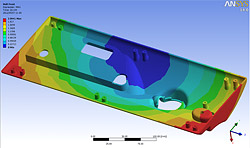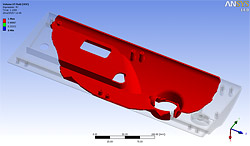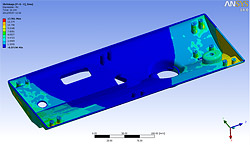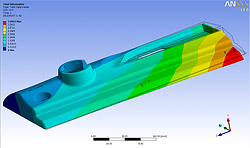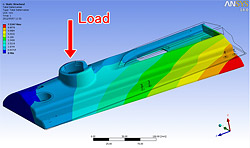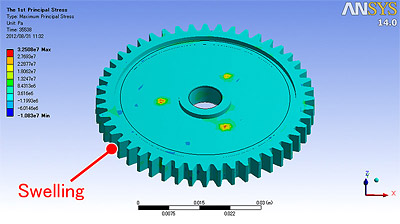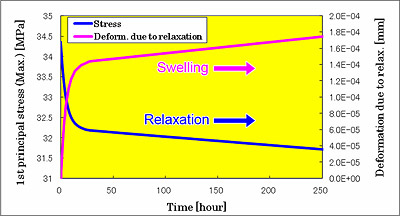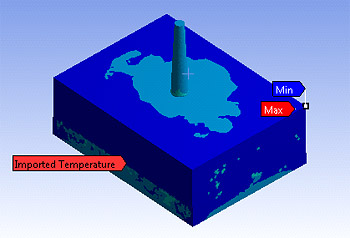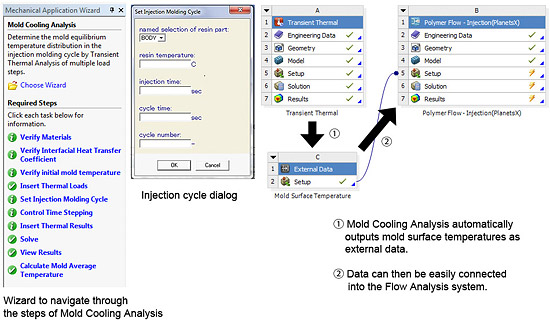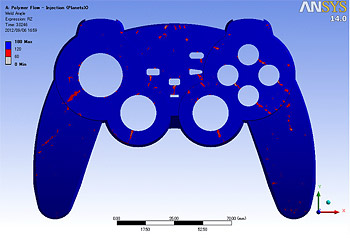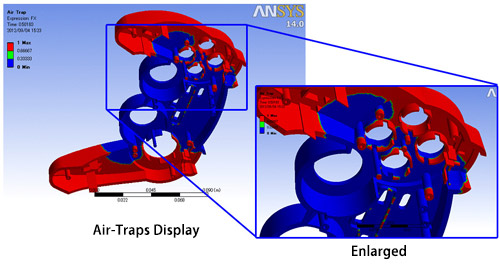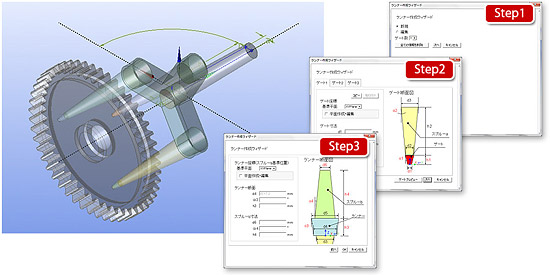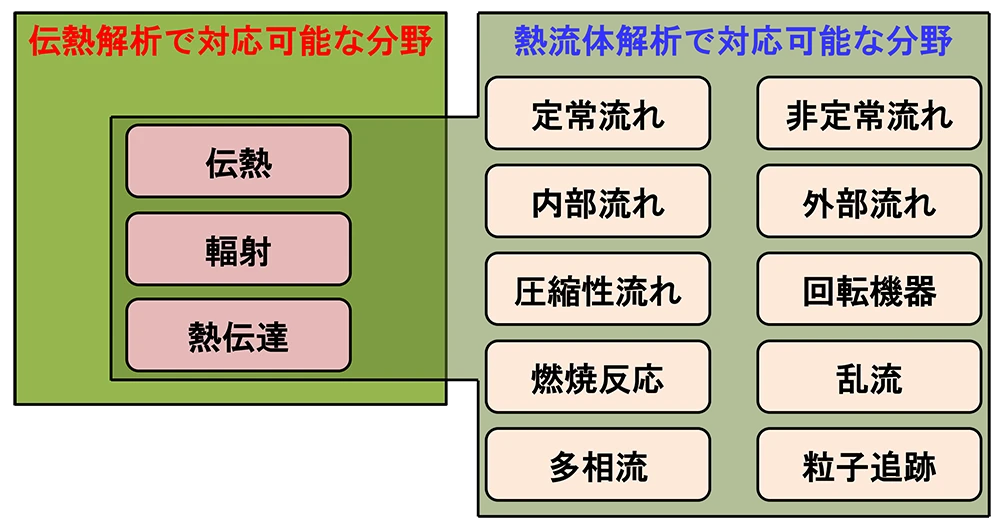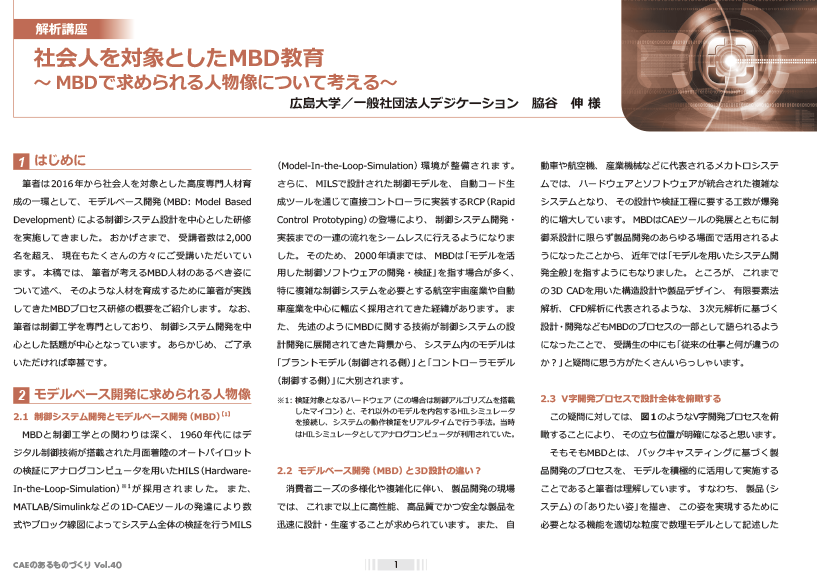PlanetsX EN
Detailed Features
Pre/Post Processing
- CAD interface & modification of 3D geometry model
Plug-in: Pro/Engineer, SolidWorks, NX, Autodesk Inventor and others
Reader: IGES, STEP, Parasolid, ACIS(SAT) and others - Mesh import/export (Finite Element Modeler)
- Mesh generation (3D automatic generator)
- View reports, View graphs, AVI function
Analysis Features
- Polymer Flow-Injection Analysis
- Warp Analysis
- Structure-Linked Analysis
- Mold Cooling Analysis
- *Fiber Orientation Analysis
- *Curing Reaction Analysis
- *Injection Compression/Press Molding Analysis
- *Optical Quality Analysis
- *Flow Residual Stress Analysis
* Optional feature
Polymer Flow-Injection Analysis
Warp/Load Deformation Analysis
Coordination with Ansys Workbench static structural solver provides; Stress Relaxation (nonlinear warp) Analysis,
Warp Analysis (considering contact of the mold), and Mold Structural Deformation Analysis. Warp Analysis based on
initial strain or temperature load allows consideration of the use of various resins.
Warp Analysis results also allow evaluation of deformation and stress during the use stage. Consideration of all of
these results in better product and mold design.
Main Analysis Results
- Warpage deformation
- Load deformation
Structure-Linked Analysis
Coordination with Ansys Workbench static structural solver provides; Stress Relaxation (nonlinear warp) Analysis, Warp Analysis (considering contact of the mold), and Mold Structural Deformation Analysis.
Stress Relaxation Analysis
Mold Cooling Analysis
Mold Cooling Analysis based on Ansys Workbench Transient Thermal Analysis solver provides an accurate prediction of mold average temperature distribution of molding cycle prior to the injection molding simulation. This result can be used as mold surface temperature for injection molding simulation.
Inputting various conditions; (1) material and shape of mold, (2) temperature and arrangement of cooling pipes and (3) temperature and injection time of resin allows detailed analysis of temperature distribution of mold surface. Temperature distribution results can be used to set parameters for Polymer Flow-Injection Analysis which allows evaluation of the effect of mold temperatures on the mold product.
Mold Cooling Analysis of PlanetsX is based on Transient Thermal Analysis of Ansys Workbench. PlanetsX provides the dedicated wizard feature for Mold Cooling Analysis which makes Ansys Workbench features easier to use when conducting Mold Cooling Analysis.
Fiber Orientation Analysis
In fiber reinforced products, fiber orientation direction and rate are predicted by calculating the orientation behavior of the reinforcing fibers due to the heat flow phenomena of the filling process. Changes in the linear expansion coefficient and Young's modulus due to fiber orientation are also reflected in Warp Analysis.
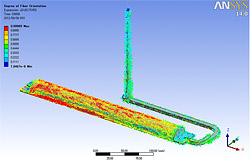
Vector distribution of fiber orientation rate
and direction
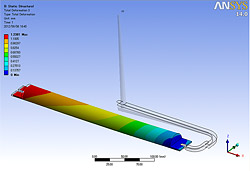
Warpage considering the anisotropy due to
fiber orientation
Curing Reaction Analysis
This optional system analyzes the curing reaction of a thermosetting resin in all phases of the injection molding process including; filling, holding-pressure and cooling. The generation of heat, the increase in viscosity and the hardening shrinkage due to curing reaction are also involved to produce an accurate prediction of plastic thermal flow.
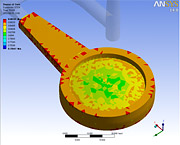
Curing reaction rate distribution

Curing shrinkage rate distribution
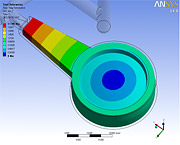
Deformation of curing shrinkage rate
Injection Compression/Press Molding Analysis
In general, Injection Compression/Press Molding allows the use of much lower injection pressure compared to Injection Molding. Analyze processes of Injection Compression/Press Molding such as filling or compressing by moving mold. This allows for better prediction of injection pressure and resin selection resulting in improved moldability.
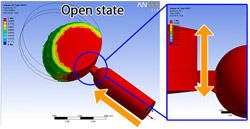
First stage injection while mold is static
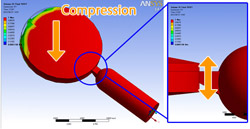
Filling the remaining area by closing mold
Other Features
*2 Works specifically with Ansys DesignModeler
Weld Lines Display
Weld angle shows collision of resin flow. It weakens the rigidity of the resin in general, these results can used to counteract molding defects.
Air-Traps Display
Displays the auto-detect of location of air entrainment occurring during resin flow. Also while considering separation and fusion, calculate the pressure and volume of air trapped. These results can used to counteract molding defects. Excluding bubbles generated from the internal voids or resin vacuum that cause the sink.
Runner Creation Wizard
Minimizes operations in creating runner configuration for product model. Allows flexible location and size of each gate. Modifications can be made easily using auto-parameterization.
Wizard feature provides three easy steps to create the shapes of a runner model.
関連情報
関連する解析事例
MORE関連する資料ダウンロード
MORE-
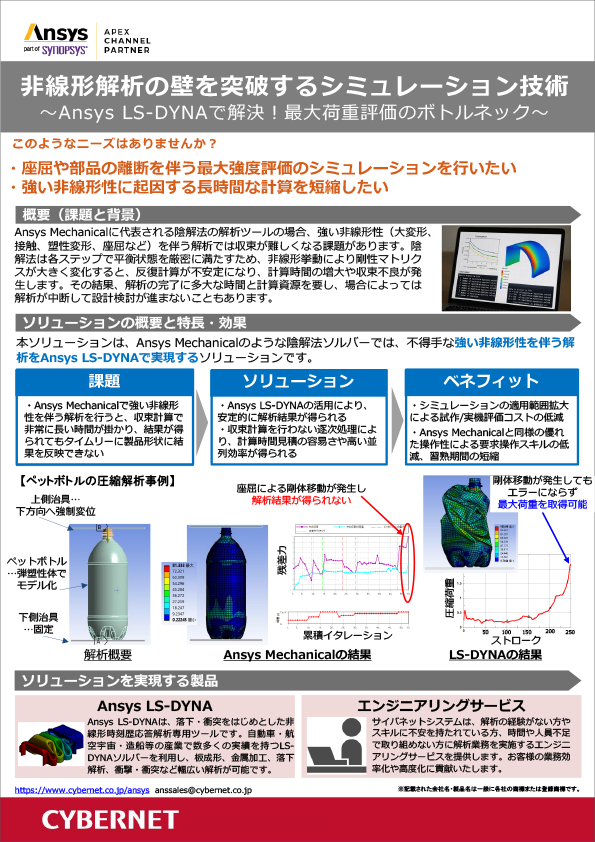
非線形解析の壁を突破するシミュレーション技術
~Ansys LS-DYNAで解決!最大荷重評価のボトルネック~
-

事例でご紹介!流体解析分野のエンジニアリングサービス ~解析業務の委託・立ち上げ支援・カスタマイズによる効率化など~
-
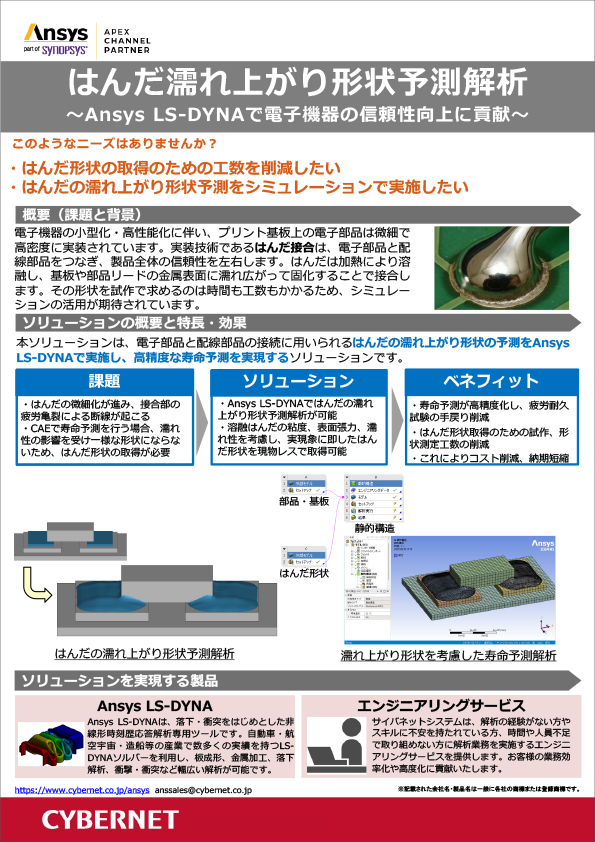
はんだ濡れ上がり形状予測解析
~Ansys LS-DYNAで電子機器の信頼性向上に貢献~
-
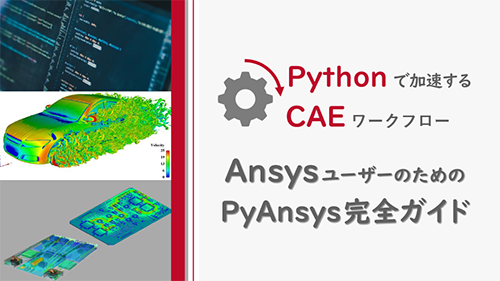
Ansys ユーザーのための PyAnsys 完全ガイド
Pythonで加速するCAEワークフロー
-
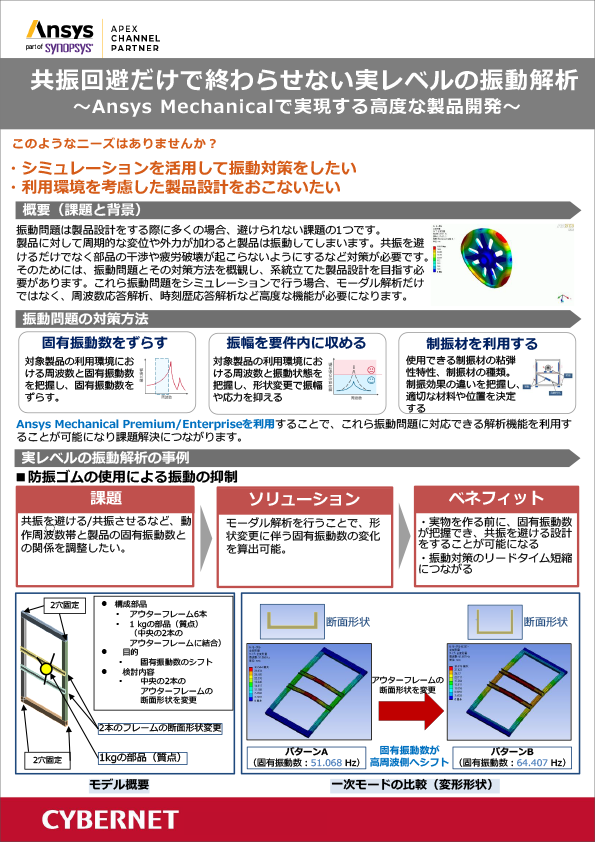
共振回避だけで終わらせない実レベルの振動解析
~Ansys Mechanicalで実現する高度な製品開発~
-
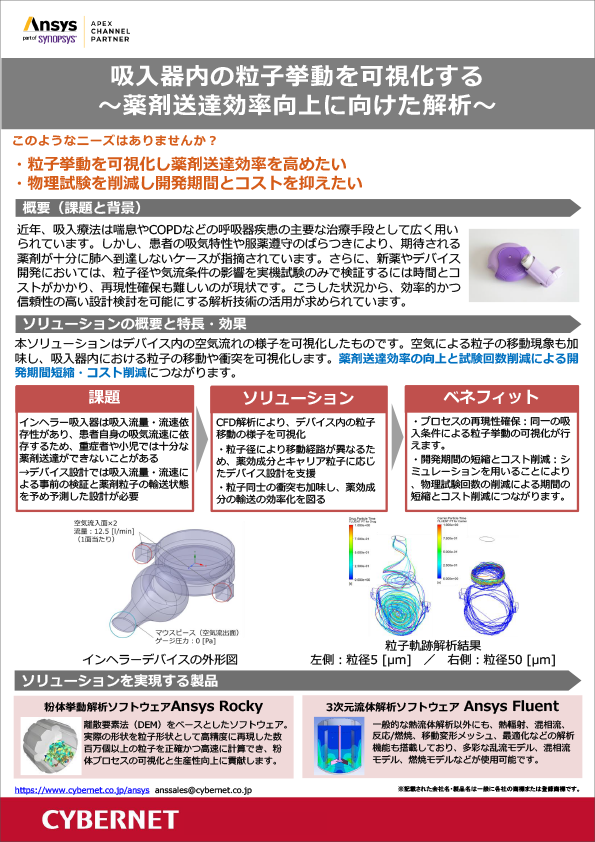
吸入器内の粒子挙動を可視化する
~薬剤送達効率向上に向けた解析~
-

医薬品バイアルの温度挙動解析
~保管環境の影響把握と品質維持に向けた可視化アプローチ~
-

そのFDTD計算、もっと速くできる!Lumerical+GPUでフォトニクス解析に革命を




